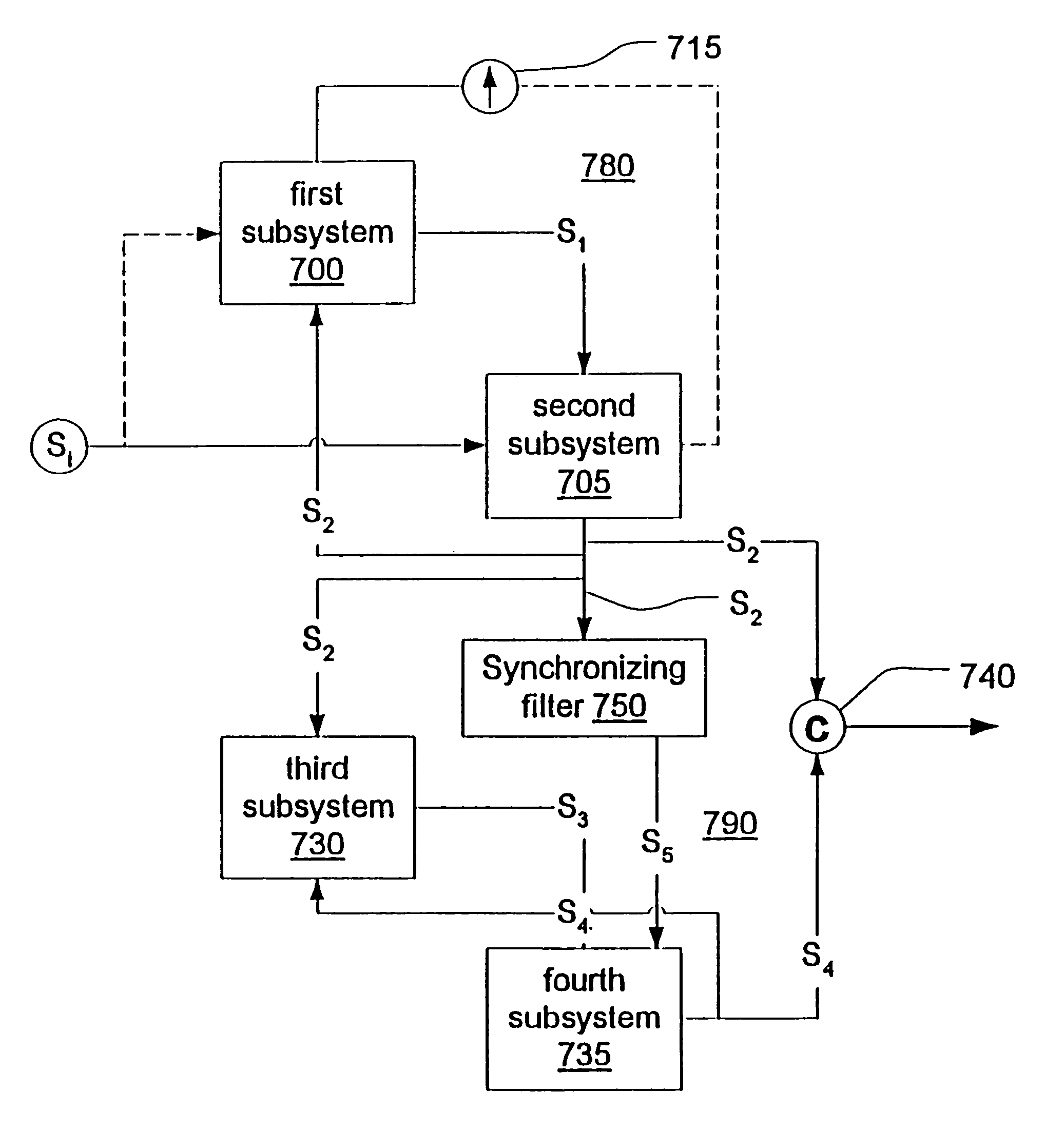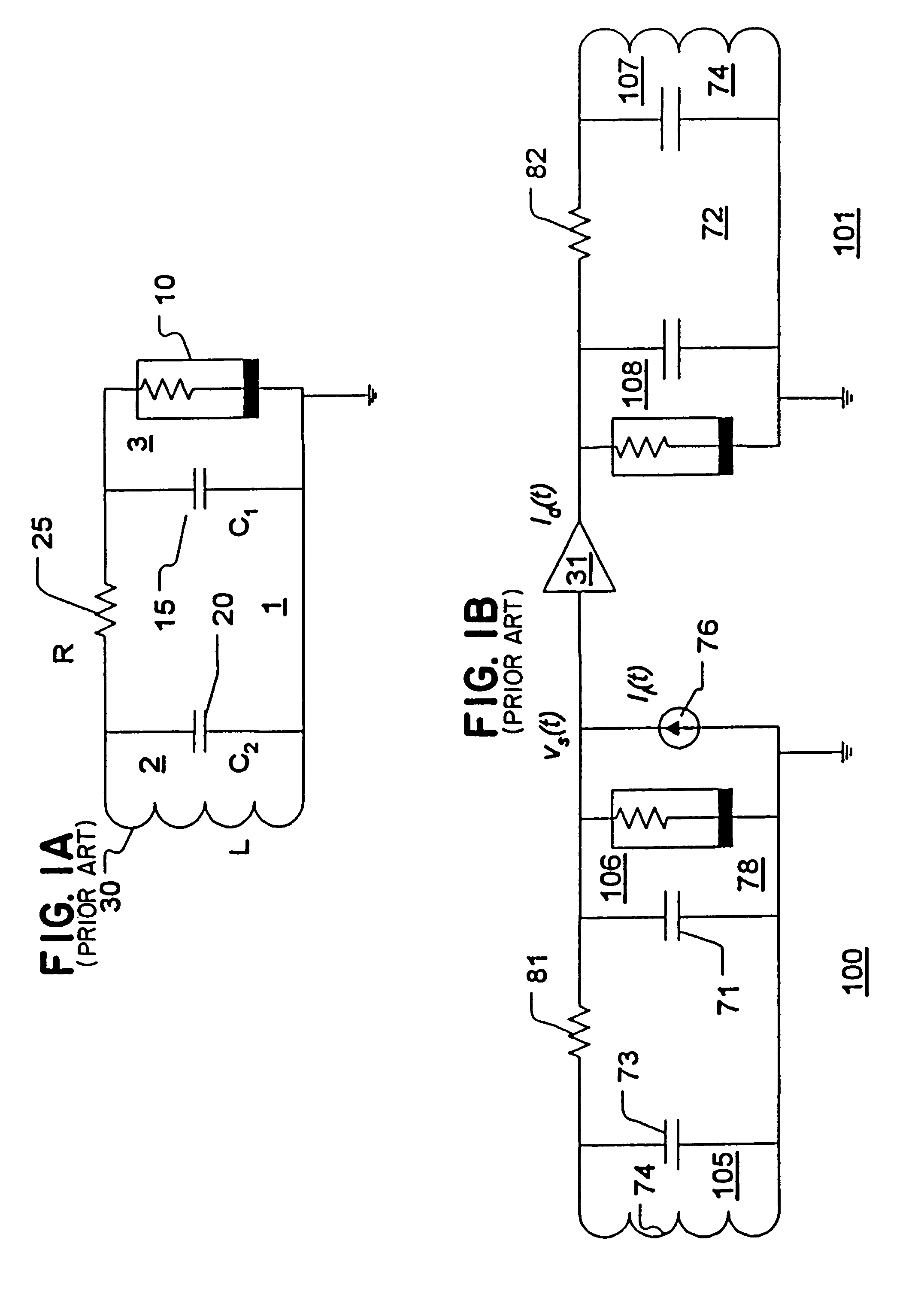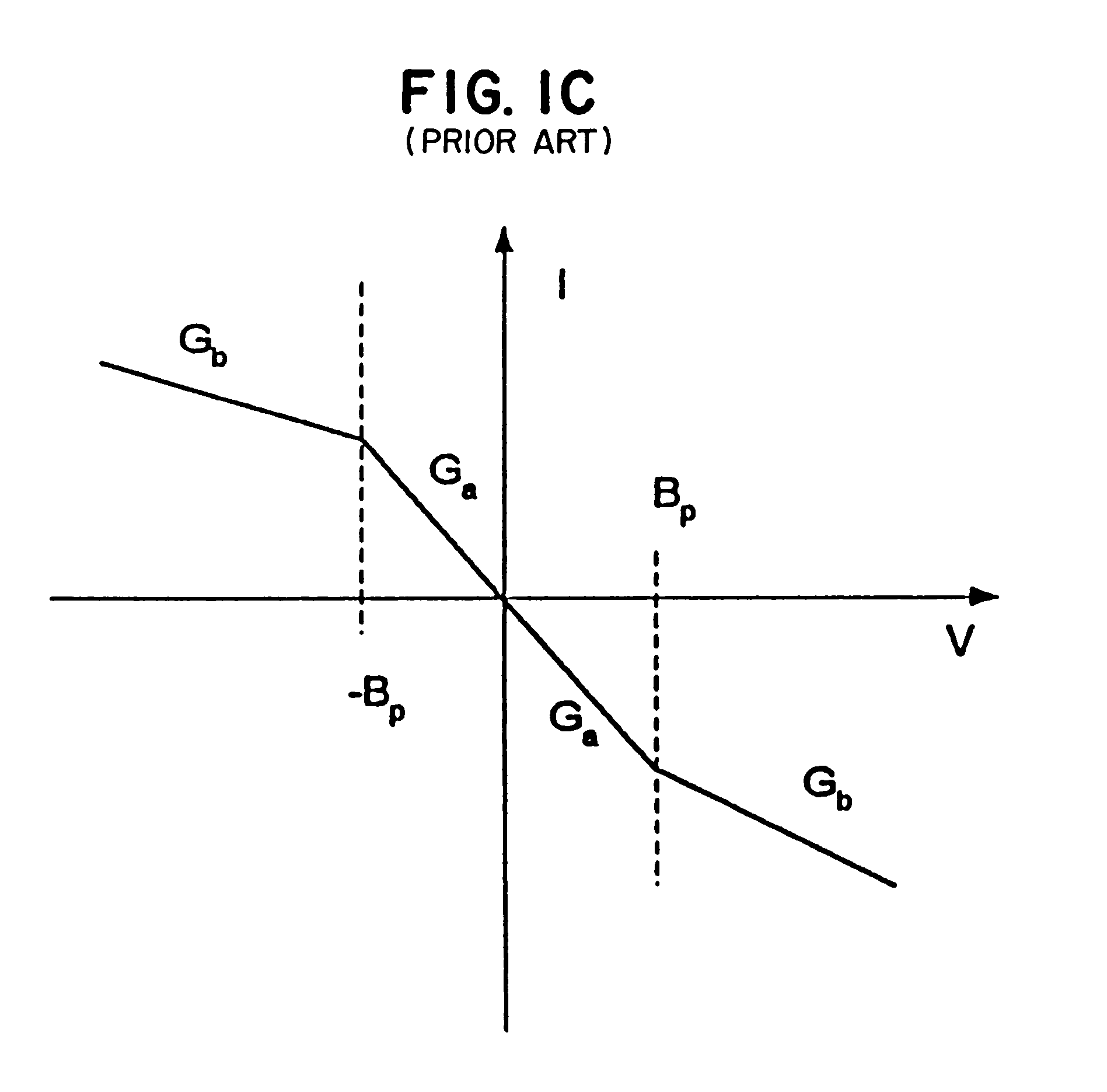Communications system using chaotic synchronized circuits
a communication system and circuit technology, applied in the field of communication system using chaotic synchronized circuits, can solve the problems of cyclic path, complex circuit, and extremely long cycle-length, and achieve the effect of reducing the number of synchronized circuits
- Summary
- Abstract
- Description
- Claims
- Application Information
AI Technical Summary
Benefits of technology
Problems solved by technology
Method used
Image
Examples
Embodiment Construction
[0040]Referring again to FIG. 1D, discussed in the background, the various chaotic oscillating regimes of the Chua circuit are mapped on an α / β parameter plane. Circuits falling in a double scroll region 60 are characterized by oscillation about two strange attractor equilibrium points. Circuits falling in a spiral set of oscillating regimes 61 exhibit oscillation about only one strange attractor equilibrium point. Varying C1 causes the α / β combination to shift as indicated by arrow 130. Varying C2 causes the α / β combination to shift as indicated by arrow 140. Varying R2 or L causes the α / β combination to shift as indicated by arrow 150. As can be seen from the diagram (FIG. 1D, the capacitance C2 of capacitor 20 may be varied over a wide range while still maintaining operation of the circuit in the double scroll oscillating regime 110. A much smaller range of values of capacitance of capacitor 15 (C1) coincide with operation in the double scroll regime 60. The wide range of capacit...
PUM
 Login to View More
Login to View More Abstract
Description
Claims
Application Information
 Login to View More
Login to View More - R&D
- Intellectual Property
- Life Sciences
- Materials
- Tech Scout
- Unparalleled Data Quality
- Higher Quality Content
- 60% Fewer Hallucinations
Browse by: Latest US Patents, China's latest patents, Technical Efficacy Thesaurus, Application Domain, Technology Topic, Popular Technical Reports.
© 2025 PatSnap. All rights reserved.Legal|Privacy policy|Modern Slavery Act Transparency Statement|Sitemap|About US| Contact US: help@patsnap.com



